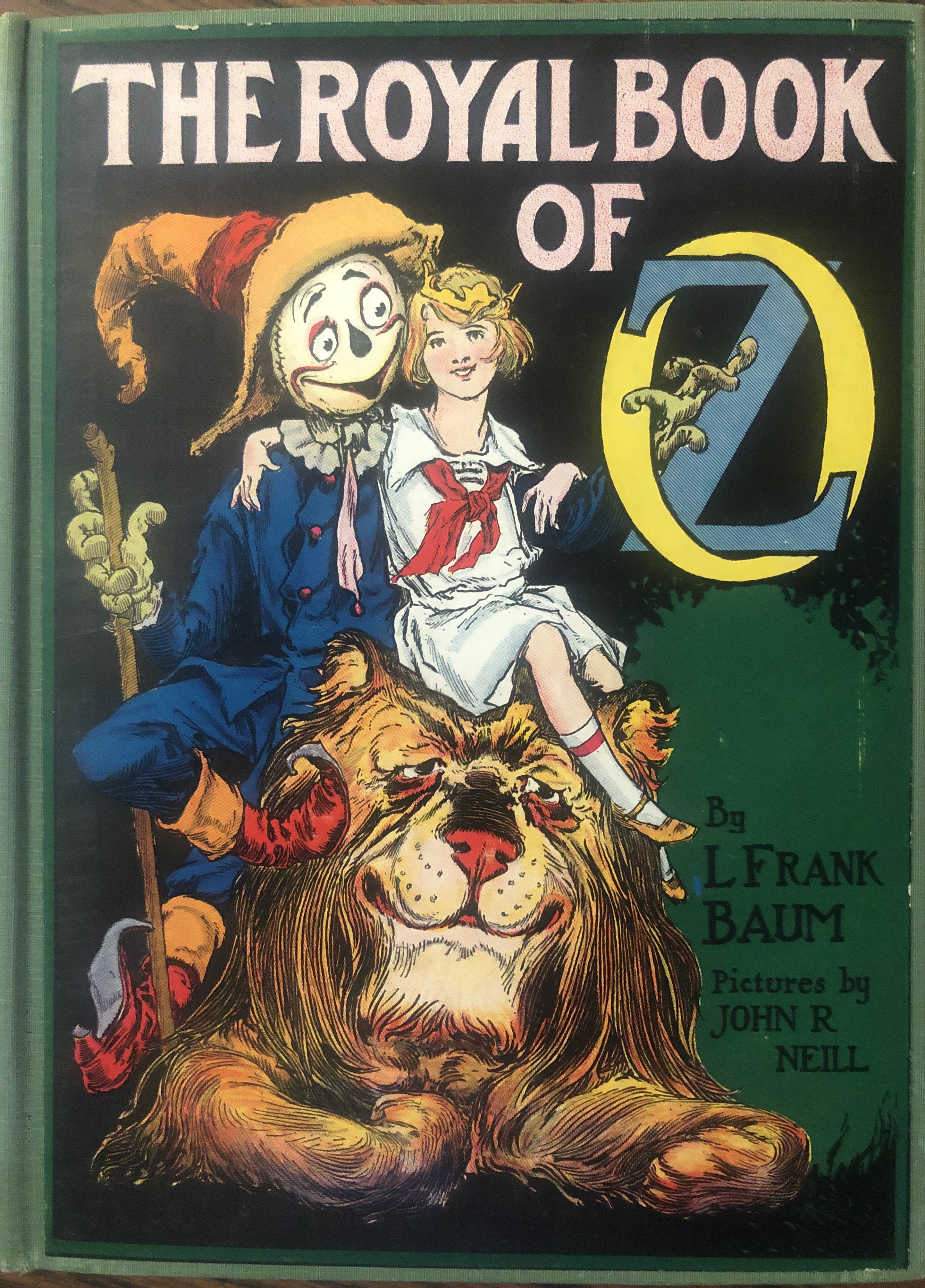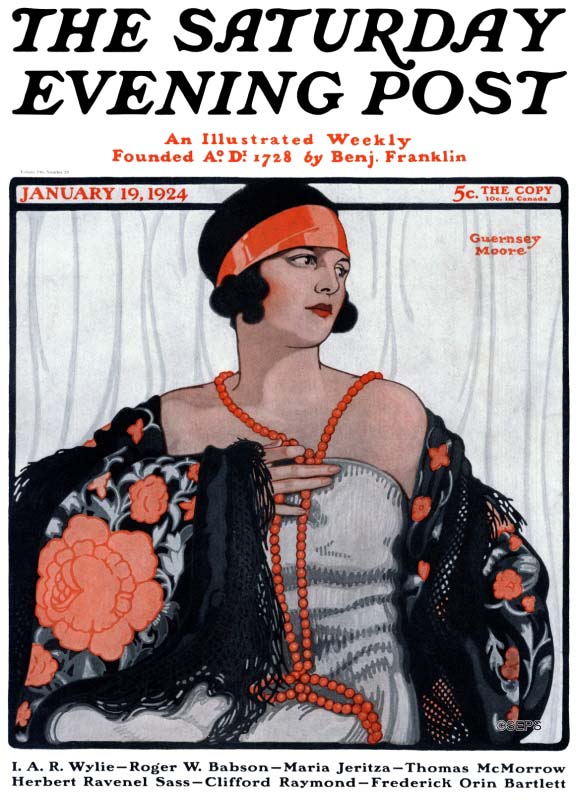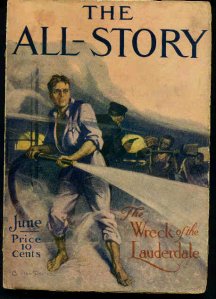|
John R. Neill
John Rea Neill (November 12, 1877 – September 19, 1943) was a magazine and children's book illustrator primarily known for illustrating more than forty stories set in the Land of Oz, including L. Frank Baum's, Ruth Plumly Thompson's, and three of his own. His Pen and ink, pen-and-ink drawings have become identified almost exclusively with the Oz series. He did a great deal of magazine and newspaper illustration work which is not as well known today. Early life Born in Philadelphia, Pennsylvania, John R. Neill did his first illustration work for the Philadelphia's Central High School newspaper in 1894-95. Neill dropped out of Pennsylvania Academy of the Fine Arts after one semester because he said, "they have nothing to teach me". He then turned to advertising art for the Wanamaker's, Wanamaker department store in Philadelphia. He became a staff artist of the ''Philadelphia North American'' newspaper, for which he produced features like the comics strip ''Toyland'', illustrations ... [...More Info...] [...Related Items...] OR: [Wikipedia] [Google] [Baidu] |
Philadelphia, Pennsylvania
Philadelphia, often called Philly, is the largest city in the Commonwealth of Pennsylvania, the sixth-largest city in the U.S., the second-largest city in both the Northeast megalopolis and Mid-Atlantic regions after New York City. Since 1854, the city has been coextensive with Philadelphia County, the most populous county in Pennsylvania and the urban core of the Delaware Valley, the nation's seventh-largest and one of world's largest metropolitan regions, with 6.245 million residents . The city's population at the 2020 census was 1,603,797, and over 56 million people live within of Philadelphia. Philadelphia was founded in 1682 by William Penn, an English Quaker. The city served as capital of the Pennsylvania Colony during the British colonial era and went on to play a historic and vital role as the central meeting place for the nation's founding fathers whose plans and actions in Philadelphia ultimately inspired the American Revolution and the nation's inde ... [...More Info...] [...Related Items...] OR: [Wikipedia] [Google] [Baidu] |
The Saturday Evening Post
''The Saturday Evening Post'' is an American magazine, currently published six times a year. It was issued weekly under this title from 1897 until 1963, then every two weeks until 1969. From the 1920s to the 1960s, it was one of the most widely circulated and influential magazines within the American middle class, with fiction, non-fiction, cartoons and features that reached two million homes every week. The magazine declined in readership through the 1960s, and in 1969 ''The Saturday Evening Post'' folded for two years before being revived as a quarterly publication with an emphasis on medical articles in 1971. As of the late 2000s, ''The Saturday Evening Post'' is published six times a year by the Saturday Evening Post Society, which purchased the magazine in 1982. The magazine was redesigned in 2013. History Rise ''The Saturday Evening Post'' was first published in 1821 in the same printing shop at 53 Market Street in Philadelphia where the Benjamin Franklin-founded ''Pennsyl ... [...More Info...] [...Related Items...] OR: [Wikipedia] [Google] [Baidu] |
The Wonder City Of Oz
''The Wonder City of Oz'' (1940) is the thirty-fourth in the series of Oz books created by L. Frank Baum and his successors, and the first written and illustrated solely by John R. Neill. Tone With ''The Wonder City of Oz'', Neill introduced a change in tone that continued through his subsequent books. Neill's Oz books "are highly imaginative, but the imagination is undisciplined; each book, in fact, has enough ideas to fill several."David L. Greene and Dick Martin, ''The Oz Scrapbook'', New York, Random House, 1977; p. 77. Neill's Emerald City has skyscrapers and gas stations. Normally inanimate objects act alive: houses talk and fight, shoes sing (they have tongues), and clocks run. The plot Jenny Jump captures a leprechaun named Siko Pompus (apparently a pun on "psychopomp") and forces him to make her into a fairy; but he only does half the job before escaping. Jenny then jumps to Oz using her half-fairy gifts. She lands in the carriage of Princess Ozma during a parade &mdas ... [...More Info...] [...Related Items...] OR: [Wikipedia] [Google] [Baidu] |
List Of Oz Books
The Oz books form a book series that begins with ''The Wonderful Wizard of Oz'' (1900) and relates the fictional history of the Land of Oz. Oz was created by author L. Frank Baum, who went on to write fourteen full-length Oz books. All of Baum's books are in the public domain in the United States. Even while he was alive, Baum was styled as "the Royal Historian of Oz" in order to emphasize the concept that Oz is an actual place. In his Oz books, Baum created the illusion that characters such as Dorothy and Princess Ozma relayed their adventures in Oz to Baum themselves, by means of a wireless telegraph Wireless telegraphy or radiotelegraphy is transmission of text messages by radio waves, analogous to electrical telegraphy using cables. Before about 1910, the term ''wireless telegraphy'' was also used for other experimental technologies for .... Original Oz books by L. Frank Baum Story compilations and other works by Baum In addition to the canonical Oz books, several ... [...More Info...] [...Related Items...] OR: [Wikipedia] [Google] [Baidu] |
Ozma Of Oz
''Ozma of Oz: A Record of Her Adventures with Dorothy Gale of Kansas, Billina the Yellow Hen, the Scarecrow, the Tin Woodman, the Cowardly Lion and the Hungry Tiger; Besides Other Good People Too Numerous to Mention Faithfully Recorded Herein'', published on July 30, 1907, was the official third book of L. Frank Baum's List of Oz books, Oz series. It was the first in which Baum was clearly intending a series of Oz books.Peter Glassman, "Afterword," p 271 L. Frank Baum, ''Ozma of Oz'', It is the first Oz book where the majority of the action takes place outside of the Land of Oz. Only the final two chapters take place in Oz itself. This reflects a subtle change in theme: in the first book, Oz is the dangerous land through which Dorothy must win her way back to Kansas; in the third, Oz is the end and aim of the book. Dorothy's desire to return home is not as desperate as in the first book, and it is her uncle's need for her rather than hers for him that makes her return. The book w ... [...More Info...] [...Related Items...] OR: [Wikipedia] [Google] [Baidu] |
Dorothy Gale
Dorothy Gale is a fictional character created by American author L. Frank Baum as the protagonist in many of his ''Oz'' novels. She first appears in Baum's classic 1900 children's novel ''The Wonderful Wizard of Oz'' and reappears in most of its sequels. In addition, she is the main character in various adaptations, notably the classic 1939 film adaptation of the novel, '' The Wizard of Oz''. In later novels, the Land of Oz steadily becomes more familiar to her than her homeland of Kansas. Dorothy eventually goes to live in an apartment in the Emerald City's palace but only after her Aunt Em and Uncle Henry have settled in a farmhouse on its outskirts, unable to pay the mortgage on their house in Kansas. Dorothy's best friend Princess Ozma, ruler of Oz, officially makes her a princess of Oz later in the novels. Appearances In literature In the Oz books, Dorothy is raised by her aunt and uncle in the bleak landscape of a Kansan farm. Whether Aunt Em or Uncle Henry is Dorothy's ... [...More Info...] [...Related Items...] OR: [Wikipedia] [Google] [Baidu] |
Argosy (magazine)
''Argosy'', later titled ''The Argosy'', ''Argosy All-Story Weekly'' and ''The New Golden Argosy'', was an American pulp magazine from 1882 through 1978, published by Frank Munsey until its sale to Popular Publications in 1942. It is the first American pulp magazine. The magazine began as a children's weekly story–paper entitled ''The Golden Argosy''. In the era before the Second World War, ''Argosy'' was regarded as one of the "Big Four" pulp magazines (along with ''Blue Book'', ''Adventure'' and ''Short Stories''), the most prestigious publications in the pulp market, that many pulp magazine writers aspired to publish in.Lee Server, ''Danger Is My Business: an illustrated history of the Fabulous Pulp Magazines''. San Francisco: Chronicle Books. (1993) (pp. 22-6, 50) John Clute, discussing the American pulp magazines in the first two decades of the twentieth century, has described ''The Argosy'' and its companion ''The All-Story'' as "the most important pulps of their er ... [...More Info...] [...Related Items...] OR: [Wikipedia] [Google] [Baidu] |
Frank M
Frank or Franks may refer to: People * Frank (given name) * Frank (surname) * Franks (surname) * Franks, a medieval Germanic people * Frank, a term in the Muslim world for all western Europeans, particularly during the Crusades - see Farang Currency * Liechtenstein franc or frank, the currency of Liechtenstein since 1920 * Swiss franc or frank, the currency of Switzerland since 1850 * Westphalian frank, currency of the Kingdom of Westphalia between 1808 and 1813 * The currencies of the German-speaking cantons of Switzerland (1803–1814): ** Appenzell frank ** Argovia frank ** Basel frank ** Berne frank ** Fribourg frank ** Glarus frank ** Graubünden frank ** Luzern frank ** Schaffhausen frank ** Schwyz frank ** Solothurn frank ** St. Gallen frank ** Thurgau frank ** Unterwalden frank ** Uri frank ** Zürich frank Places * Frank, Alberta, Canada, an urban community, formerly a village * Franks, Illinois, United States, an unincorporated community * Franks, Missouri, United ... [...More Info...] [...Related Items...] OR: [Wikipedia] [Google] [Baidu] |
Adventure (magazine)
''Adventure'' was an American pulp magazine that was first published in November 1910Robinson, Frank M. & Davidson, Lawrence ''Pulp Culture – The Art of Fiction Magazines''. Collectors Press Inc 2007 (p. 33-48). by the Ridgway company, an subsidiary of the Butterick Publishing Company. ''Adventure'' went on to become one of the most profitable and critically acclaimed of all the American pulp magazines."No. 1 Pulp" ''''. The magazine had 881 issues. Its first editor was Trumbull White, he was succeeded in 1912 by |
Boys' Life
''Scout Life'' (formerly ''Boys' Life'') is the monthly magazine of the Boy Scouts of America (BSA). Its target readers are boys and girls between the ages of 6 and 18. The magazine‘s headquarters are in Irving, Texas. ''Scout Life'' is published in two demographic editions. Both editions often had the same cover, but are tuned to the target audience through the inclusion of 16–20 pages of unique content per edition. The first edition is suitable for the youngest members of Cub Scouting, the 6-to-10-year-old Cub Scouts and first-year Webelos Scouts. The second edition is appropriate for 11-to-18-year-old boys and girls, which includes second-year Webelos through 18-year-old Boy Scouts, Varsity Scouts and Venturers. If the subscription was obtained through registration in the Boy Scouts of America program, the publisher selects the appropriate edition based on the scout's age. In June 2007, ''Boys' Life'' garnered four Distinguished Achievement Awards conferred by t ... [...More Info...] [...Related Items...] OR: [Wikipedia] [Google] [Baidu] |
The Delineator
''The Delineator'' was an American women's magazine of the late 19th and early 20th centuries, founded by the Butterick Publishing Company in 1869 under the name ''The Metropolitan Monthly.'' Its name was changed in 1875. The magazine was published on a monthly basis in New York City. In November 1926, under the editorship of Mrs. William Brown Meloney, it absorbed ''The Designer,'' founded in 1887 and published by the Standard Fashion Company, a Butterick subsidiary. One of its managing editors was writer Theodore Dreiser, who worked with other members of the staff such as Sarah Field Splint (later known for writing cookbooks ) and Arthur Sullivant Hoffman. The novelist and short story writer, Honoré Willsie Morrow served as editor, 1914–19. ''The Delineator'' featured the Butterick sewing patterns and provided an in-depth look at the fashion of the day. Butterick also produced quarterly catalogs of fashion patterns in the 1920s and early 1930s. In addition to clothing ... [...More Info...] [...Related Items...] OR: [Wikipedia] [Google] [Baidu] |



_p136.jpg)

